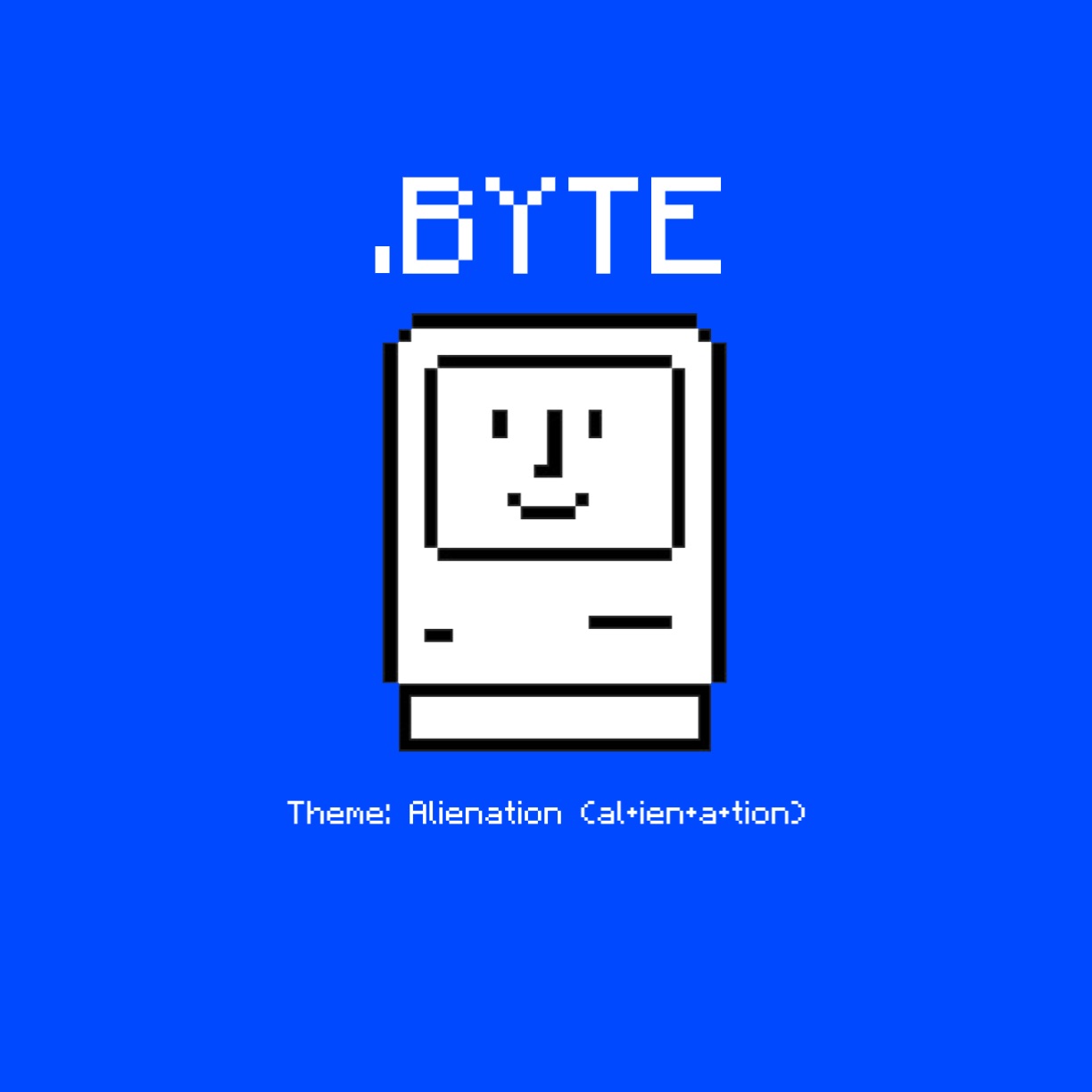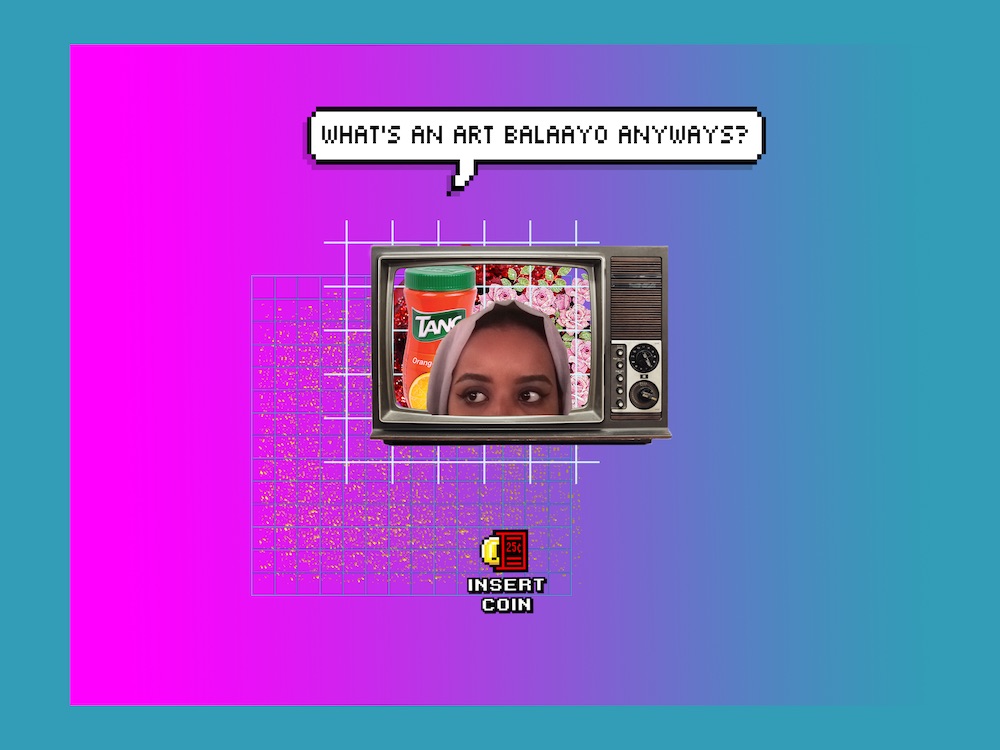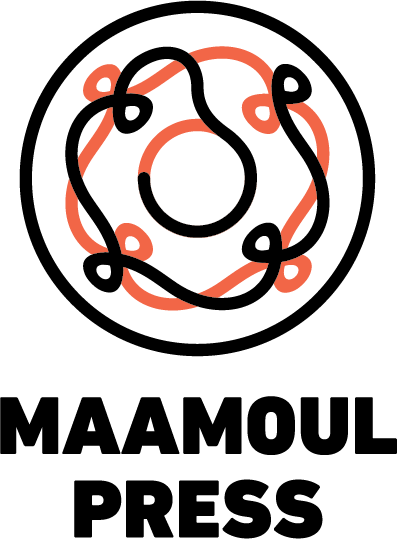Cyborgs and the Somali Diaspora: A Converstaion with Gothlime/Halima Salah
Originally published June 1, 2017 on Bigmouth Comix.
Halima Salah is a Somali-Canadian artist and civil engineer. Raised around the world, Salah has been living in the UAE for the past nine years. Her zine-making and illustration work explore themes of technology, alienation, and the absurdity of the modern human condition. Her work and zines are visually striking, making use of jarring, bright neons and pastels, merging illustration, glitch art, and digital collage. We interviewed Halima to learn more about her art, process, and the projects she's currently working on.

Leila Abdelrazaq: Let's start at the beginning. How did you first get into in zine-making and illustration?
Halima Salah: I’ve always been doodling but I only recently got into zine making, influenced by the incredible people who make their own zines I decided to try it out. I fell in love with it. I found so much inspiration online by reading zines that I would find out via twitter (Jaffat El Aqlam, Somali Semantics etc)
I also love reading scanned old goth zines via Flickr.
LA: Tell us about the idea behind your zine .BYTE and why you began working on it.
HS: .BYTE was born during last year’s final exam season at a library in Sharjah. After one of my most stressful exams, I had a brainstorming session of concepts. I was always interested in zines and creating a space to express certain interests. .BYTE is linked to the concepts of how aliens would probably read us. The zine is a guidebook and collection of different pieces for them to understand us. .BYTE is a zine for both aliens and humans who want to bite back at the world when they can’t understand it. I co-curate it with Eman AlEghfeli, we’ve known each other since high school. Eman and I also shared similar interest in specific colors and music.

LA: Cyberspace, technology, glitch art, and the internet are clearly a big part of your work, could you talk about why? HS: Cyberspace and technology are huge part of our lives. I grew up with the internet (like many people) but I used it as a form of escapism, which can be healthy and unhealthy. I’ve always loved art that created it’s own world since I found the real world chaotic and ugly. I always loved making my own form of reality by reading and writing a lot of fanfiction and roleplaying. I start to notice that whatever I absorbed online and through the TV did bleed into my art, from fanfiction.net to Spacetoon that would watch in Somalia.

LA: .BYTE is a partially digital zine. Do you do print copies of the zine? Why or why not, and what to you are the merits and drawbacks of digital zines versus printed ones?
HS: .BYTE is URL and IRL. Eman and I have not started selling the zine but only have limited copies printed for exhibitions. The print versions will start to become available later on this year. I usually find that digital zines are more accessible, I benefited a lot from digital zines. Living in the UAE meant access to a lot of the zines would be a little bit more harder. I only recently found more Middle East based zine making folks.
In our first digital issue of .BYTE we had embedded music, which would be impossible if it was in print. I would say the only downside of print is the lack of flexibility of some pieces that might be in mp3, gif etc.

LA: Why the theme of Alienation for the first issue? Is this a common theme throughout your personal work? HS: I’ve always felt alienated and found solace in cyberspace for expression. This world is chaotic and I just look at it in a way-how tragic we really are. I would see human beings as parasites on this planet constantly taking but never giving back fully to nature. I know it’s a bit too pessimistic but I do have hope for humanity. Alienation is a theme in a lot of my work because I love science fiction and I’ve always felt like an alien or a glitch in the system. I feel like I am an alien-a foreigner, an immigrant...and constantly navigating in those spaces. I’m pretty sure actual aliens are laughing at our condition. I always like to imagine how they’d look at us.

LA: Can you talk a bit about the Art Balaayo exhibit that just went down in London and the significance of that show? HS: The Art Balaayo exhibition was held at Red Door Studios, London, UK from May 5th to May 14th. Balaayo means trouble or bullshit in Somali. Over a year ago I co-founded a podcast with the name Art Balaayo, the podcast is currently on hiatus. Zeinab Saleh, the curator of the exhibition, was inspired by the name and wanted to make a space for young Somali female artists. For young Somali artists connecting is usually on the internet, we create our own communities so having that in the IRL is magical.
As Najma Sharif puts it “For those of us who grew up online, in countries outside of Somalia, the internet is as much a part of our culture as our ethnic identity” I couldn’t attend the exhibition but I felt like I was there via the URL. All of the women who were part of the Art Balaayo exhbition are amazing.
LA: I know you also do your own illustration, zines, and mini comics. Anything in particular you are working on at the moment that you’d like to share with us? HS: I’m currently working on a project featuring a character that floats around a lot-she’s ethereal and not fully human. Hopefully I’ll finish it by the end of summer.
Many of Halima's zines, such as Body Body: A conversation between the body and the self, can be read online. You can also keep up with Halima's work by following her on twitter@gothlime, following her on instagram (also @gothlime) and by visiting her tumblr.
© Copyright 2025, Maamoul Press
